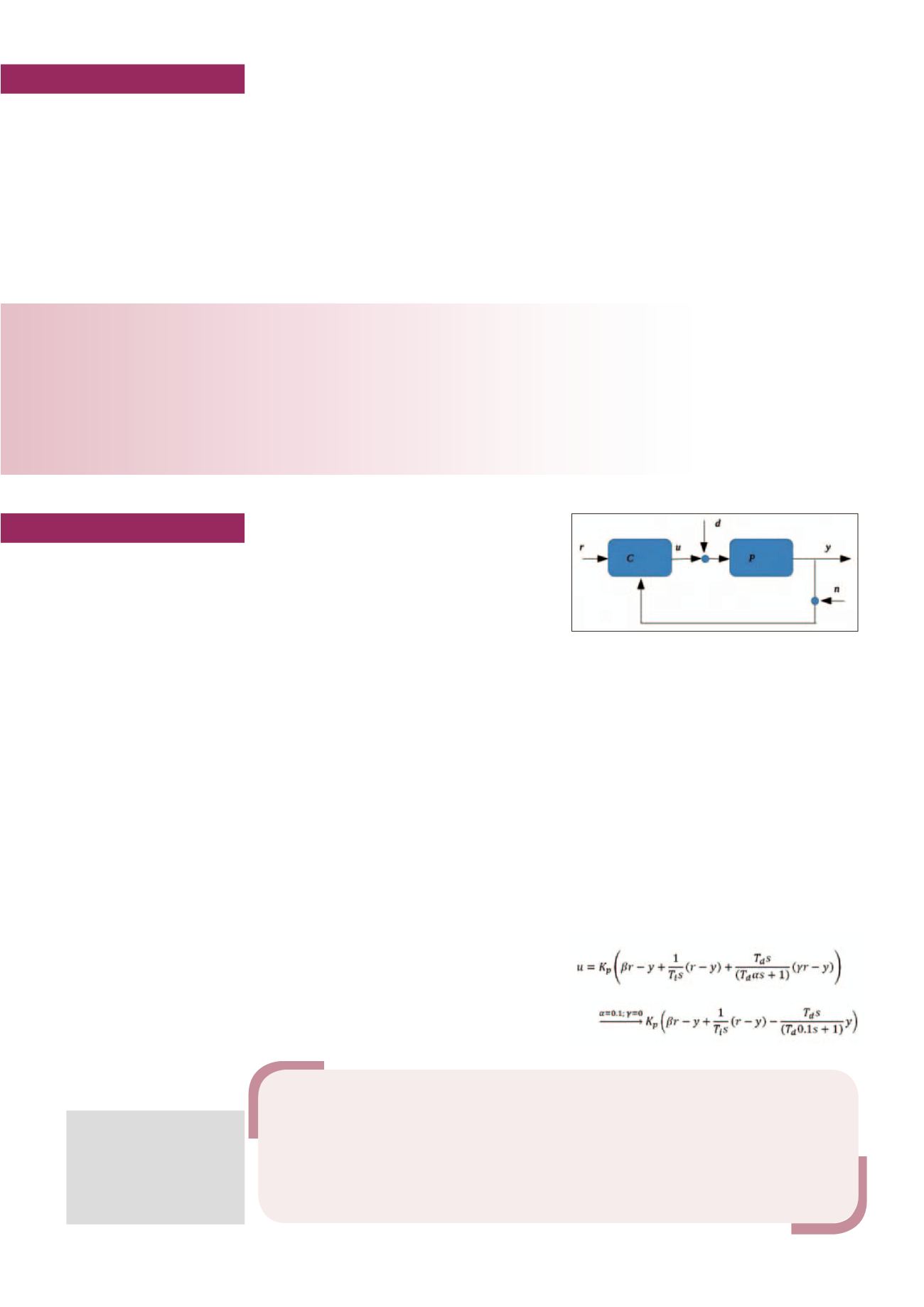

CONTROLLO
tecnica
Aprile 2017
Automazione e Strumentazione
88
Tuning of PID controllers is one of the key aspects in control system deployment.
Tuning rules provide an easy way of obtaining values for a PID controller
given information about the process is available. In this note a very simple and
straightforward tuning procedure, called uSORT, is presented. It is based on first and
second order systems and provides optimal integrated absolute error performance
provided some degree of robustness is guaranteed.
Ramon Vilanova
Simple robust PID tuning
It is an indisputable fact that the
proportion-
al-integral-derivative
,
PID
, controller has been,
and it still is, the workhorse of control at process
industries. Even if more advanced control solu-
tions are permeating into the control rooms, the
PID continues to be the preferred solution at field
level. Therefore, the reliability of those advanced,
plant-level solutions, depends on the appropri-
ate performance at field level. We could state it
depends on the PID level.
One of the cornerstones of activity in PID con-
trol is that of adjusting the PID gains: tuning the
PID controller. Being this a basic need in con-
trol practice, the goal of obtaining simple, pow-
erful and as generalist as possible tuning rules
has been one of the major drivers of research
for improvements on PID control
[4]
. In this
note, attention is focused on simple expressions
for the PID gains with the purpose to reinforce
the use of advanced tuning approaches, as they
can take quite simple expressions.
PID based control system
The purpose of a control system is to obtain a
desired response for a given system. We consider
the typical feedback control system represented
in
υ
Figure 1
.
where
P
is the process to be controlled,
C
is the
controller,
r
is the set-point signal,
u
the control
signal,
d
is the load disturbance signal,
y
is the
process output,
n
represents the measurement
noise and
e:=r - y
is the control error (the differ-
ence between the process output and its desired
or reference value). Being
u
the command signal
generated by the controller, the application of a
PID controller is, essentially, the result of weight-
ing three different actions. The most usual PID
implementation is the so called ISA or Standard
PID that takes the form (using the expression in
the Laplace s-domain):
L’AUTORE
R. Vilanova, Departament de
Telecomunicació i Enginyeria de
Sistemes, Universita Autonoma
de Barcelona, Spain
IN ADDITION TO PERFORMANCE, ROBUSTNESS IS ALSO IMPORTANT FOR PID TUNING
Taratura dei PID semplice e robusta
La taratura dei controllori PID è uno degli aspetti chiave nella messa in funzione dei sistemi di controllo. L’uso di formule di taratura sempli-
fica questo aspetto laddove si ha un modello del processo. In questo articolo viene presentata una procedura semplice e intuitive chiamata
uSORT, basata su un modello del processo del primo o secondo ordine e che fornisce una prestazione che minimizza l’integrale del valore
assoluto dell’errore garantendo allo stesso tempo una adeguata robustezza.
Figure 1 - PID based control system


















